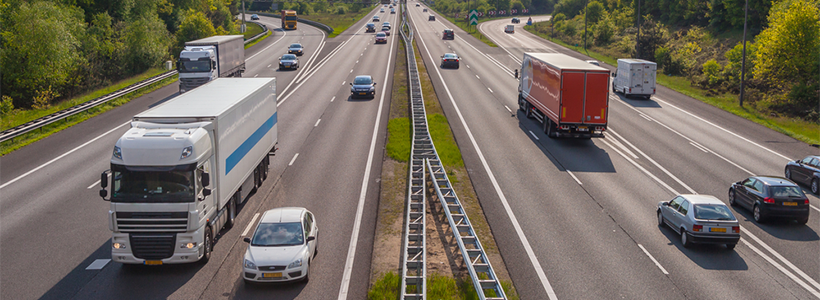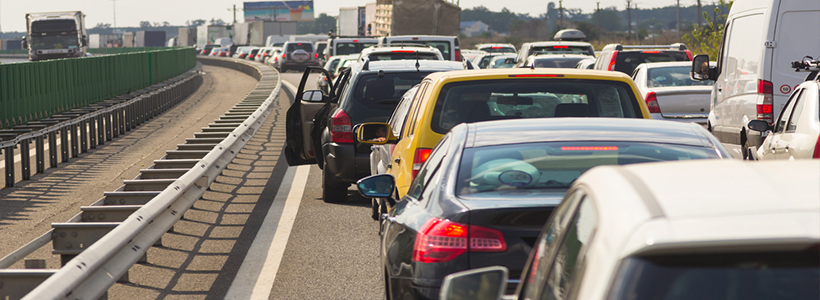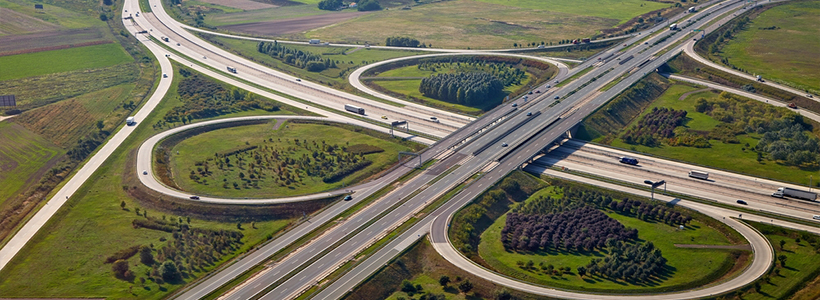
The Road To Progress: What Are Smart Motorways Doing For Us?
27th Jan, 2017
We’ve already talked about self-driving cars as a sign that our world is becoming increasingly automated, with the motor industry seeing particular advances.
But it’s not just our cars that are starting to think for themselves – smart motorways are another invention that’s gradually changing the way we drive, and they’ve been growing in number for over a decade. Here’s how even our roads are becoming smarter, and what that means for us.
How Do Smart Motorways Work?

Though the technology it uses is complex, the principle behind a smart motorway is pretty straightforward: it uses cameras and software to actively monitor and control traffic, operating under the oversight of a regional traffic control centre. Amongst its foremost aims is to tackle congestion, which it does using a number of tools under its metaphorical belt – one of these is by operating variable speed limits; speeding up and slowing down the flow of traffic accordingly, depending on how many cars are on the road.
Each smart motorway also exercises complete control over lanes, using overhead gantries to communicate changes to drivers. It can open the hard shoulder – either at peak times or permanently – in order to create an extra lane on busy roads, allowing more capacity and therefore more flexibility when they’re packed with vehicles. It can also close lanes by flashing a red X on the gantries in order to allow emergency vehicles through, or to make way for a car that’s broken down.
Through these same gantries, a smart motorway displays warning signs to alert motorists to traffic jams and other hazards or obstacles up ahead. All of them also have an emergency refuge areas every 500 metres or so, giving drivers in difficulty a safe haven from the traffic and providing a phone for them to ring the relevant highway or emergency services.
How Are They Getting On So Far?

You tell us! The first smart motorway opened over ten years ago now, in 2006, so there’s a very high chance you’ve already driven on one. Highways England, the government-owned company who initiated the scheme, has reported that since then journey reliability has improved by 22%, as well as drastically reducing the number of serious or fatal accidents on the road. Smart motorways also have tangible environmental benefits (which is very important to us at Scrap Car Network), since they increase the capacity of roads without going to the expense and trouble of having to expand them. This saves not only public money, but also woodland and other green areas from being further consumed by widening highways.
They’ve still got a bit of work to do though – motorists aren’t quite so fond of them at the moment. More than 1000 people a week are being caught speeding on smart motorways, which is speculated to be because people are finding them confusing. The president of the AA, meanwhile, has stated openly that the company would like to see more emergency refuge areas on smart motorways, as people using them are still occasionally being rear-ended by other vehicles. With more refuge areas, the AA argue, the current rate of accidents and collisions could be reduced even further.
Love Them Or Hate Them – They’re Here To Stay

Though they’re not quite perfect yet, it’s still interesting to see smart motorways as yet another part of the many-faceted Internet of Things: the concept of a network of inanimate objects all thinking, communicating and acting without human input. We’re already seeing it in the development of self-driving cars – one day we could be looking at a future in which your car talks not only to the road, but to other vehicles as well!
Wherever the future takes us, you can still count on Scrap Car Network to be here when you say scrap my car. With a network of scrap car dealers all across the UK, be assured that wherever you are in Britain, we’ve got a trusted dealer near you. Enter your postcode and car registration on our website to get started today!
Don’t forget to follow us on Twitter: @ScrapCarNetwork